- Home
- Neal Stephenson
The Rise and Fall of D.O.D.O. Page 8
The Rise and Fall of D.O.D.O. Read online
Page 8
Feeling like a dolt before I’d even departed, I borrowed Tristan’s Jeep and drove up Route 1 to Salem, about an hour away. In that vehicle, on that road, this was like being beaten with sacks of gravel.
Like many New England towns with something of historical note to recommend it, Salem was a bizarre combination of well-preserved, beautiful old buildings and ugly commercial developments. The commercial developments were winning, however. Ignoring the various signs for the Salem Witch Museum, the Salem Witch House, the Salem Witch Village, the Salem Witch Day Spa, and so on, I found a parking spot on a broad street, marveled at how cheap the parking was, and walked into the older part of town. I have no words to describe how unenthusiastic I felt about this assignment. Three and a quarter centuries after nineteen innocent people were hanged for no reason, a bunch of New Age types whose concept of witchcraft had zero in common with the seventeenth-century concept of witchcraft decided to set up shop right by the graves of the victims. What the fuck. I have no tolerance for sloppy logic like that.
Just so I could tell Tristan I’d done it, I walked into a couple of occult shops that I found along a pedestrian stretch of Essex Street, then fled before the incense overwhelmed me.
There’s another context-is-everything moment, because now I live for incense—if I really am to be stuck permanently in 1850s London, I might have to become an Anglican nun. God, I hope it doesn’t come to that.
In the end, though, the scholar in me won out, and I ended up visiting a few of the legitimate historical sites in the Salem area. The name of Mary Estey—one of the victims of the witch hysteria—kept jumping out at me. Rebecca East, Frank’s wife, had mentioned that she was a descendant of this family, the spelling having changed and the final syllable having been dropped from the surname at some point in the intervening three centuries. In typical WASP style, Rebecca underplayed its significance, pointing out that the families of that era had been enormous and that, if you did the math, every second or third white person you encountered on the streets of America was probably descended from someone who had lived in Salem. But I felt that the least I could do was pay my respects.
Then, suddenly feeling as though it was late in the day and that I must be missing important developments, I got back in the Jeep and fought my way back through late afternoon traffic to the office. I can’t say I mourned my failure overmuch, as it meant I’d get a free trip to New Orleans out of it, and that would rock be most excellent.
I DROVE BACK to the office late in the day to find Tristan collapsed on the couch from exhaustion. I began to make coffee in one of the high-tech machines we had pillaged from a departing tech start-up. While it gurgled and hissed, I idly and out of habit took my phone out and glanced at it. There was a banner notification from Facebook Messenger.
“I will wait in the lobby,” said a private message from the Hungarian woman, with a 9:04 a.m. time stamp on it.
“Oh God,” I said out loud. How could I have gone the whole day with hardly a thought of her?
A mechanical chime sounded as an instant message sprang up. “I waited the ENTIRE DAY. Where were you?” She had changed her profile picture again, this time to an artsy-looking purple blur.
I went to the couch and nudged Tristan. Deep asleep, he almost instantly awoke and leapt to his feet, shoving me sideways without registering my identity, glancing around for an assailant.
“It’s just me,” I said with irritation. “Calm down.”
“You startled me,” he said, as if I should have known better.
I gestured to my phone. “Take a look at this.”
Even as I showed him her comments, our exchange, and her blank “About” page, several more prompts popped up on the bottom of the screen with mechanical chimes, as Miss Karpathy informed me she could see I was online and why was I not answering?
Tristan considered the screen a moment. “The Vladimirs have been all over this. Intriguing-slash-disturbing-in-the-extreme. Tell her you’ll speak to her tomorrow. Today’s got to be about the dry run.”
I tapped in, “Sorry. Will be with you tomorrow evening.”
Immediately the response: “Why the delay?”
“Technical difficulties,” I typed.
“With the ODEC?” she typed back instantly.
I looked at Tristan. “Jesus,” he said under his breath. “Who is she?” He moved closer to the screen and nudged my shoulder with his. “Tell her you can’t discuss it online,” he whispered, as if worried of being overheard by somebody. I typed this in, and a response came back:
“Will you come with your Mr. Tristan Lyons?” she typed back. “I wish to meet him.”
I looked up over my shoulder at my Mr. Tristan Lyons. He nodded, staring at the screen.
“We could go now,” I suggested.
He shook his head. “We don’t know what we’re getting into. Tell her yes, I’ll come with you. But tomorrow.”
“With Mr. Tristan Lyons,” I typed. “Tomorrow evening.”
“Come before 6 p.m. or it will be harder to leave because of the Night Guard.”
We both continued to stare at the screen for a moment in silence. Then Tristan reached out and gently took the phone from my hand, tossed it on to the couch.
“Can’t wait to hear the explanation,” he said, sounding weary. Then, with a tired grin down at me: “Funny how she called me your Mr. Tristan Lyons.”
I felt my face flush. “Maybe she’s dealt with another Tristan Lyons,” I said. “Surely the multiverse contains more than one. The coffee’s ready.”
“Good,” he said, “because so is the ODEC.”
During my sojourn to Salem, the crew had mounted all of the circuit boards to the walls of the inner cavity and also bolted in the electromagnets; these were mounted to a sturdy framework of steel angle irons that had been welded together around the external tank. Black melted areas on the floor suggested that welding sparks had set the occasional odd fire to the carpet; larger burns were surrounded by penumbras of powder that had apparently been shot out of the various fire extinguishers, which now lay scattered around the floor like empty beer bottles after a frat party. As Tristan led me in, he absentmindedly nudged these out of the way with his foot, cautioning me to watch my step.
“Did your friends come through with the liquid helium?” I asked. Certainly the first time in my life I had uttered that sentence.
“They will.”
“That’s a no?”
“We’re testing it with liquid nitrogen. Much cheaper.”
As if on cue, the persistent, infuriating beep-beep-beep of a truck’s backup alarm sounded from the street; we could hear it through the roll-up door at the loading dock.
“Woo hoo hoo!” Tristan shouted. “LN2! Up and at ’em, folks!” He strode down the tank right-of-way to the loading dock and hit the button that opened the dock door. A semi-trailer rig consisting largely of a large white sausage-shaped tank was backing down the ramp from the street, scattering nests of rats and pissing off seagulls. Suddenly there were weary-looking Maxes and Vladimirs all over the place. In block letters that could be seen from space, the truck was labeled LIQUID NITROGEN. Ah, of course: liquid nitrogen, aka LN2. After Tristan’s brief, disgustingly cheerful exchange with the driver, hoses were connected between his truck and some storage tanks that, in my absence, had been crudely bolted into the concrete walls of the building. Impressive whining noises came from a thing that, I was informed, was a cryogenic pump. When the LN2 first hit the warm innards of the storage tanks, there was an amount of hissing that defied description, unless you have ever heard all of the bacon in Iowa being dropped onto a red-hot griddle the size of Delaware. With that was a concomitant amount of milky, chilly fog. Tristan grabbed me by the arm and dragged me out of the building. “Non-toxic,” he assured me, “but—”
“But I need oxygen.”
“Yeah. I knew I liked you, Stokes.”
“Is this why the ODEC contains life support equipment?”
&nbs
p; He shrugged modestly. “There are certain failure modes,” he said, “such as freezing to death and asphyxiating, that come naturally to mind when we are getting ready to lock human subjects in a sealed chamber completely surrounded by cryogenic fluids chilled to within four degrees of absolute zero.”
That initial spasm of hissing and fog production was because the walls of the tank were at room temperature. Once they had been chilled down, the pumping of the LN2 continued with no more drama than if it had been tap water. The fog dissipated and Tristan made a decision, which I assumed was science-based, that it was safe to go back inside. I followed him through the loading dock doors, past the tanks, and all the way to the door of the ODEC, which now stood ajar. I took a small step up to stand on its threshold, and had a look around.
Every square inch of the cavity’s interior surfaces, including its floor and ceiling, had now been tiled with circuit boards: plates of green plastic covered with fine traceries of orange-red copper and studded with electronic components. Most of these were the tiny black rectangles of integrated circuits, but there were also LEDs blinking in a range of colors. Dangling from the ceiling by their hoses was a pair of oxygen masks—part of the life support equipment, clearly: should helium leak into the cavity and displace the breathable air, its occupants could pull these down and strap them over their faces. (I was never a hard-science chick, but my high school chemistry teacher near enough resembled Orlando Bloom that I had diligently aced the class.)
Still balanced on the raised threshold, I turned around to look out the ODEC door into the space surrounding the chamber. Where the head of the conference table had formerly stood was a control console, attached to the ODEC by a large plastic pipe, channeling gouts of cables. Above it, a cable ladder from the server room disgorged a waterfall of Ethernet cables and fiber-optic lines. Seated at the console, running through some kind of checklist on an iPad, was the probably-Korean Max. Oda-sensei and his wife, Rebecca, were watching over his shoulder.
“Wow,” I said from the threshold.
“Right?” chirped Tristan happily. Somewhat unnecessarily, he extended a hand to assist me back down to the floor. “The professor is giddy. Tell him he should throw the switch.”
“It is your project,” Oda-sensei said peaceably, sipping coffee from a blue thermos. “The honor should be yours.”
“It was your project first! We’ve been arguing about this all week,” said Tristan to me with a grin. “You call it, Stokes.”
I called it in favor of Oda, and Tristan saluted him with a flourish more Renaissance than military. Tristan then closed the ODEC door and engaged several massive mechanical latches.
With a childish, nervous smile, Oda-sensei handed off the thermos to Rebecca, then responded to Tristan with a gesture something between a nod and a bow. Console Max stood up, stepped back from the console, and made a similar gesture, inviting him to sit down. Oda, with a little don’t mind if I do smile, took the Seat of Authority behind the console and pulled on a communications headset.
There was one moment of potent, expectant stillness. What a thrill this must be for him, I remember thinking. I was desperately curious. The enormousness of it far exceeded my urgency to discuss Erszebet Karpathy.
“Exterior vent ports open,” Oda intoned.
I had no idea what he was talking about until I heard the familiar rumble and groan of the loading dock door being hauled up. “Check,” shouted a Max. He was echoed by another Max who had just opened the door that fronted the street.
“Atmospheric exchange augmentation systems to full power,” Oda said.
Tristan darted over to a white plastic window fan—one of a pallet load of such that we had acquired from Home Depot—and turned it on full blast. I saw now that several more were scattered around the room. Feeling a desire to be part of this momentous occasion, I turned on all that were in reach.
“Check!” Tristan called, when all of them were spinning. I could hear a much larger, industrial-sized fan humming out by the loading dock, and another “Check!” from that quarter.
“Burst disks and pressure relief valves are all green,” said Oda, glancing at his display. “Initiating cryogenic chill-down sequence in three . . . two . . . one . . .”
Cryogenic pumps began to hum, and a few seconds later we heard the sizzle and hiss of liquid nitrogen coming into contact with room-temperature plumbing. The idea was simple enough, now that I understood what was happening: we needed to pump the LN2 from the big storage tanks by the loading dock, through piping that the Maxes had installed, to the gap between the ODEC’s inner and outer vessels. But since the plumbing and the vessels alike were currently warmer than the boiling point of LN2, the liquid was going to boil off at first, until everything got chilled down. As before, clouds of milky, chilly fog spilled out of valves all over the facility. But the “atmospheric exchange augmentation systems” did a good job of pushing it out the “exterior vent ports.” Outside of these—as we could all tell by checking surveillance monitors that had been racked up on the half-shattered remnant of a nearby wall—several Lukes were standing guard to make sure that random people didn’t just wander in off the street. The Lukes had begun showing up a couple of days ago; they were big, beefy, taciturn, and dressed in rent-a-cop uniforms devoid of insignia. They seemed to think Tristan was cool.
The cryogenic drama lessened as (one inferred) the plumbing and vessels became super-cold, and then we could hear the fluid level rising between the ODEC’s inner and outer walls. Oda had purchased a large number of cheap digital thermometers from Home Depot and duct-taped them all over the place, and it was fun, for a while, to see their readings plummet into triple-digit negative numbers.
“How much farther?” I asked Tristan, during a lull.
“To what?” he inquired.
“To absolute zero.”
He shook his head. “Not going there today.”
“I thought that was the whole point.”
“Don’t pout. This is a dry run. With LN2. Which costs less than milk. If it works we’ll source the liquid helium and do it for real.”
“Vessel is full. Hatch is full. Both holding steady,” Oda announced. “Confirming criticality in lower magnet ring.”
“Criticality? Sounds very MLA,” I said.
“MLA?”
“Modern Language Association.”
Tristan sighed. “He just means that the magnets in the bottom-most ring have now been cold enough, long enough, that they have dropped through their TC—their critical temperature—and become superconducting.” He seemed mildly offended by my quip.
“Ah, so that’s the purpose of the dry run,” I said.
“Yeah. Until all of the magnet rings go superconducting, we can’t even turn the ODEC on in any meaningful sense of the word.”
This at least gave me something to watch. The vessels, of course, had filled from the bottom up, and so the magnets on the bottom had spent a longer time exposed to cryogenic temperatures. From bottom to top, there were thirty-two distinct rings of little magnets, each of which completely encircled the cavity—the ODEC’s inner vessel. The rings were stacked one above the next, spanning the full height of the cavity. The Maxes had mounted an LED on each ring. It was red when the magnets were warm, but turned blue when they had gone superconducting. Over the course of a couple of minutes we enjoyed the simple but weirdly exciting spectacle of watching that column of LEDs turn from red to blue, from the bottom to the top.
“We have full criticality,” Oda announced when the uppermost one turned blue.
I had found myself standing next to Rebecca. On an impulse, I turned toward her and raised my hand, palm facing out. Startled by the movement, she swiveled her head to place me under her blue-eyed gaze. It was like staring into a couple of those LEDs.
It occurred to me that she might not recognize the gesture. “High five?” I said weakly. She looked away as if hoping that the whole regrettable incident could be forgotten.
Me
anwhile her husband was busy. “Internal sensor calibration matrix has been computed and flashed to embedded firmware. Ready to boot the renormalization feedback loop, Vladimirs?”
“Check!” shouted a Vladimir from the server room.
“Booting it,” Oda said, and reached out toward one of the very few mechanical switches on the console. It was military hardware, eBayed (Tristan boasted) from some collector of Cold War electrical components. It had a protective cover that had to be flipped up out of the way to provide access to the switch itself, imbuing it with more ceremony.
I nearly suffered a heart attack after Oda snapped the switch to “on”: an alarm Klaxon began to sound and it happened to be mounted directly above my head. I jammed my hands over my ears and pivoted away from it; Rebecca was doing the same, in mirror image. At the same time the room lights dimmed, flickered, and went out, prompting battery-powered red emergency lights to switch on. I tripped over a discarded fire extinguisher and staggered a couple of paces, finally breaking my fall by colliding with a rolling coatrack that had been set up to one side of the console. This had been stocked, for some reason, with a row of snowmobile suits in various sizes and colors. They were soft, and cushioned my fall as I knocked the whole thing over and went down onto the floor. It must have made a loud noise. No one noticed because of the Klaxon.
Tristan was either a perfect gentleman or no gentleman at all. At the moment he was too fascinated by goings-on surrounding the ODEC to know that I had taken a pratfall. Probably just as well. I clambered to my feet and reached into my pocket, where I’d got in the habit of stowing a pair of foam earplugs. Recently I had been using them when operating power saws, but they were just what I needed now.
Tristan signaled Oda to switch the power off. The Klaxon went silent. The room lights flickered back—this took a few moments, since one of the Vladimirs had to run to the electrical panel and flip a number of circuit breakers back on. The collective excitement of the room palpably dissipated. So much drama, so many sound and visual effects, for—what?

 Zodiac: The Eco-Thriller
Zodiac: The Eco-Thriller The Mongoliad: Book One
The Mongoliad: Book One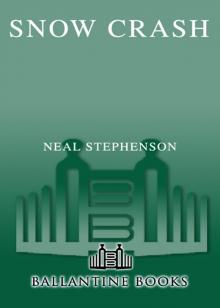 Snow Crash
Snow Crash The Confusion: Volume Two of the Baroque Cycle
The Confusion: Volume Two of the Baroque Cycle The Rise and Fall of D.O.D.O.
The Rise and Fall of D.O.D.O. The Diamond Age: Or, a Young Lady's Illustrated Primer
The Diamond Age: Or, a Young Lady's Illustrated Primer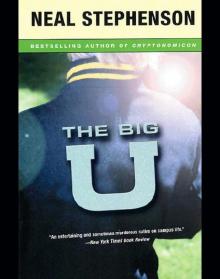 The Big U
The Big U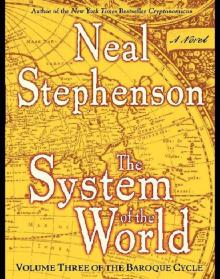 The System of the World: Volume Three of the Baroque Cycle
The System of the World: Volume Three of the Baroque Cycle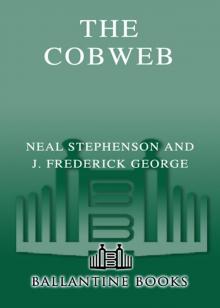 The Cobweb
The Cobweb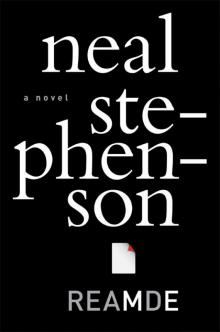 Reamde
Reamde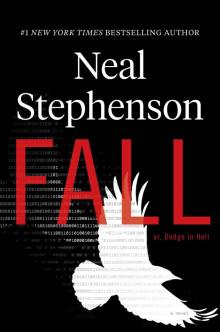 Fall; or, Dodge in Hell
Fall; or, Dodge in Hell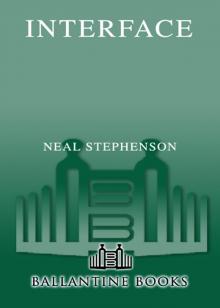 Interface
Interface Quicksilver
Quicksilver The Mongoliad: Book Three
The Mongoliad: Book Three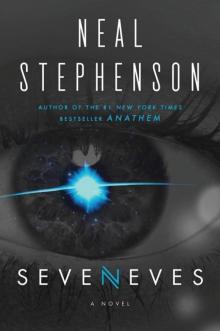 Seveneves
Seveneves Atmosphæra Incognita
Atmosphæra Incognita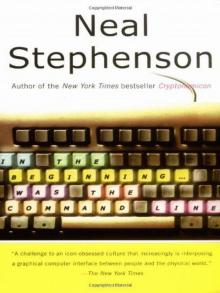 In the Beginning...Was the Command Line
In the Beginning...Was the Command Line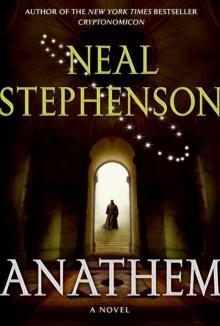 Anathem
Anathem The Rise and Fall of D.O.D.O.: A Novel
The Rise and Fall of D.O.D.O.: A Novel The Mongoliad: Book Two
The Mongoliad: Book Two Diamond Age or a Young Lady's Illustrated Primer
Diamond Age or a Young Lady's Illustrated Primer THE System OF THE WORLD
THE System OF THE WORLD The Mongoliad: Book One tfs-1
The Mongoliad: Book One tfs-1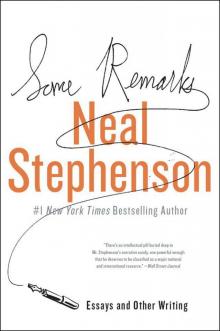 Some Remarks: Essays and Other Writing
Some Remarks: Essays and Other Writing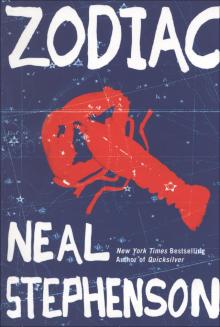 Zodiac
Zodiac Spew
Spew The Baroque Cycle: Quicksilver, the Confusion, and the System of the World
The Baroque Cycle: Quicksilver, the Confusion, and the System of the World The Diamond Age
The Diamond Age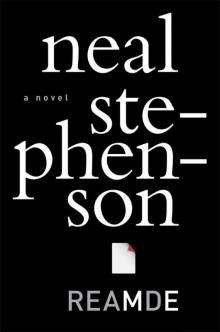 Reamde: A Novel
Reamde: A Novel In the Kingdom of Mao Bell
In the Kingdom of Mao Bell Mother Earth Mother Board
Mother Earth Mother Board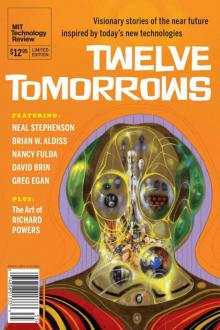 Twelve Tomorrows - Visionary stories of the near future inspired by today's technologies
Twelve Tomorrows - Visionary stories of the near future inspired by today's technologies The Confusion
The Confusion The Great Simoleon Caper
The Great Simoleon Caper The Mongoliad: Book Three tfs-3
The Mongoliad: Book Three tfs-3